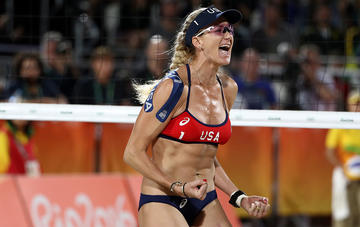Imagine that your day job consisted of running, swimming, or gymnastics; followed by strength training and prepping for competition. It sounds exhausting, but it’s a typical day for the Olympic athletes in Rio. There’s also another element to the Olympic athlete’s training: a ceaseless hunger. Most Olympic athletes need to consume a tremendous number of calories (some eat up to 8,000 per day) to fuel for their daily workouts and maintain strength. But eating whatever, whenever isn’t the solution. Food is more about fuel and nutrition than anything else. So what exactly do Olympians eat, and what can you steal from their diet plans?
Calories Matter
It’s impossible to pinpoint the exact diet of an Olympian. They all have different needs based on size, sport, and training. But Olympic athletes need to be mindful about making healthy food choices. Just because they can eat thousands of calories of McDonald’s doesn’t mean that they should. Jason Machowsky, R.D., C.S.S.D., a sports dietitian who works with many athletes at the Hospital for Special Surgery, says one of the most important aspects of fueling the Olympic athlete is to “create a plan that allows you to get in the right fuel each day based on the day’s demands, which involves eating foods for good health and immunity plus performance nutrition.” Elite competitors are putting enormous strain on their bodies and immune systems, which means eating enough vitamins and minerals is even more important. A sick athlete is a benched athlete!
Make it work for you:
Choose healthy foods to get the most gains from your workout and overall health. The healthier you are, the better you will feel, and the more your body will respond to your hard work.
Fueling properly for a workout will only make you feel better during the workout. Olympians may eat a mound of pasta before an intense gym session, but mere mortals can grab a piece of fruit or a handful of crackers.
All About Those Carbs
Carbohydrates are a huge part of fueling the Olympic athlete, making up 55 to 65 percent of the diet. For those athletes who don’t want to count their calories or carbohydrates? Dietitians who work with the U.S. team have created a simple plate system. On easy training days, athletes should build an “easy plate”: 1/2 vegetables, 1/4 grains, and 1/4 protein. On moderate days, the grains increase to 1/3 of the plate; on hard days, the grains should be half the plate. This system allows athletes to get adequate carbs to fuel their workouts while still eating a balanced diet.
Make it work for you:
On most days, we can follow the “easy plate,” which is what the USDA has been recommending for years.
Recovery Matters
Kristi Spence, R.D., C.S.S.D., a dietitian who competed in the Olympic Trials for the marathon in 2008, says that when training, she always paid close attention to her recovery meal. “I think recovery nutrition is crucial, and I would make sure that I consumed something with carbohydrate and protein as soon as I could after intense training. I would often make chocolate milk smoothies—chocolate milk with frozen strawberries or frozen bananas—to enjoy after training. The flavor was terrific and I knew that the milk was delivering exactly what I needed.”
Make it work for you:
Recovery is the key to feeling good enough to work out again the next day. After an intense workout, your muscles need a mixture of carbs and protein. Chocolate milk is one of the best way to refuel.
For any competitive athletes, don’t try anything new on race day. Your stomach won’t be happy with you.

